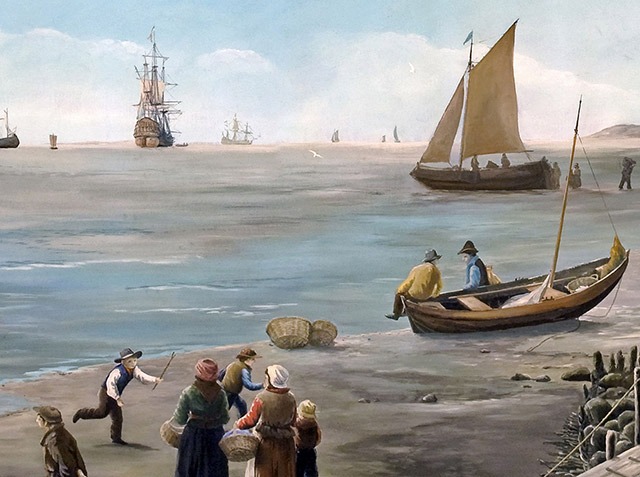
Wadden beach on the Roads. Detail from a painting from Johan Reydon
Around 1600, the Roads had become so economically important that leading merchants from Amsterdam, some in military service, arranged the construction of several large houses near the coast. Texelaars and many immigrants followed by building their – much smaller – homes behind the dike. The village was named after the rich shellfish fishing grounds which lay off of the banks. ‘Skil’ is old-Dutch for the word shell.
Behind the dike, the scallywag boats (‘schooierschuiten’) lay on the wadden beaches. Nobody knows exactly when this term was first used for the boats with which the locals tried to earn a living off all the activity on the Roads. Texelaars sold barrels of water and fresh provisions, and transported correspondence and people to and from the ships.
Willem van de Velde the Younger was an artist specializing in maritime and coastal scenes. He painted many of these typical boats. Even on the scale model of the Texel Roads t Kaap Skil you can see numerous miniature ‘schooierschuiten’, sailing between the sea-going vessels or beached along the wadden coast.

